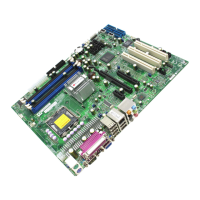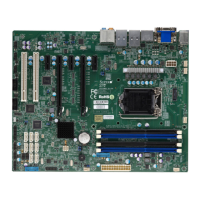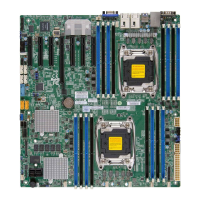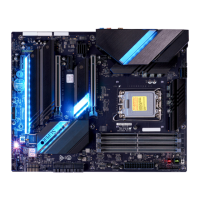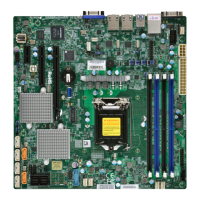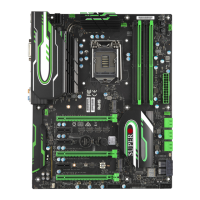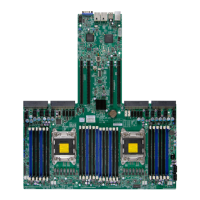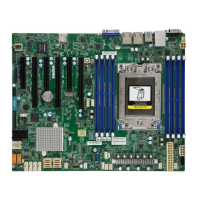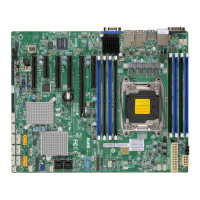Chapter 4: BIOS
4-17
Interrupt
This setting allows you to select the IRQ (interrupt request) for Serial Port B. The
options are IRQ3 and IRQ4.
Serial Port C
This setting allows you to decide how the system controls Serial Port C. The options
are Enabled (user defined), Disabled, Auto (BIOS controlled) and OS Controlled.
Base I/O Address
This setting allows you to select the base I/O address for Serial Port C. The options
are 220 and 238.
Interrupt
This setting allows you to select the IRQ (interrupt request) for Serial Port B. The
options are IRQ5 and IRQ10.
Serial Port D
This setting allows you to decide how the system controls Serial Port C. The options
are Enabled (user defined), Disabled, Auto (BIOS controlled) and OS Controlled.
Base I/O Address
This setting allows you to select the base I/O address for Serial Port C. The options
are 220 and 238.
Interrupt
This setting allows you to select the IRQ (interrupt request) for Serial Port B. The
options are IRQ5 and IRQ10.
Hardware Monitoring
CPU Temperature Threshold
This option allows the user to set a CPU temperature overheat threshold that
will activate the alarm system when the CPU temperature reaches this pre-set
temperature threshold. The Default setting is 80
o
C. (*See the note below.)
Highlight this and hit <Enter> to see monitor data for the following items:
CPU1 Temperature
/System Temperature
Fan1 - Fan 5
If the feature of Auto Fan Control is enabled, the BIOS will automatically display
the status of the fan as specified.
Fan Speed Control Modes
This feature allows the user to decide how the system controls the speeds of the
onboard fans. The CPU temperature and the fan speed are correlative. When
the CPU on-die temperature increases, the fan speed will also increase, and vice
versa. If the option is set to “4-pin”, the fan speed will be controlled by Pulse Width

